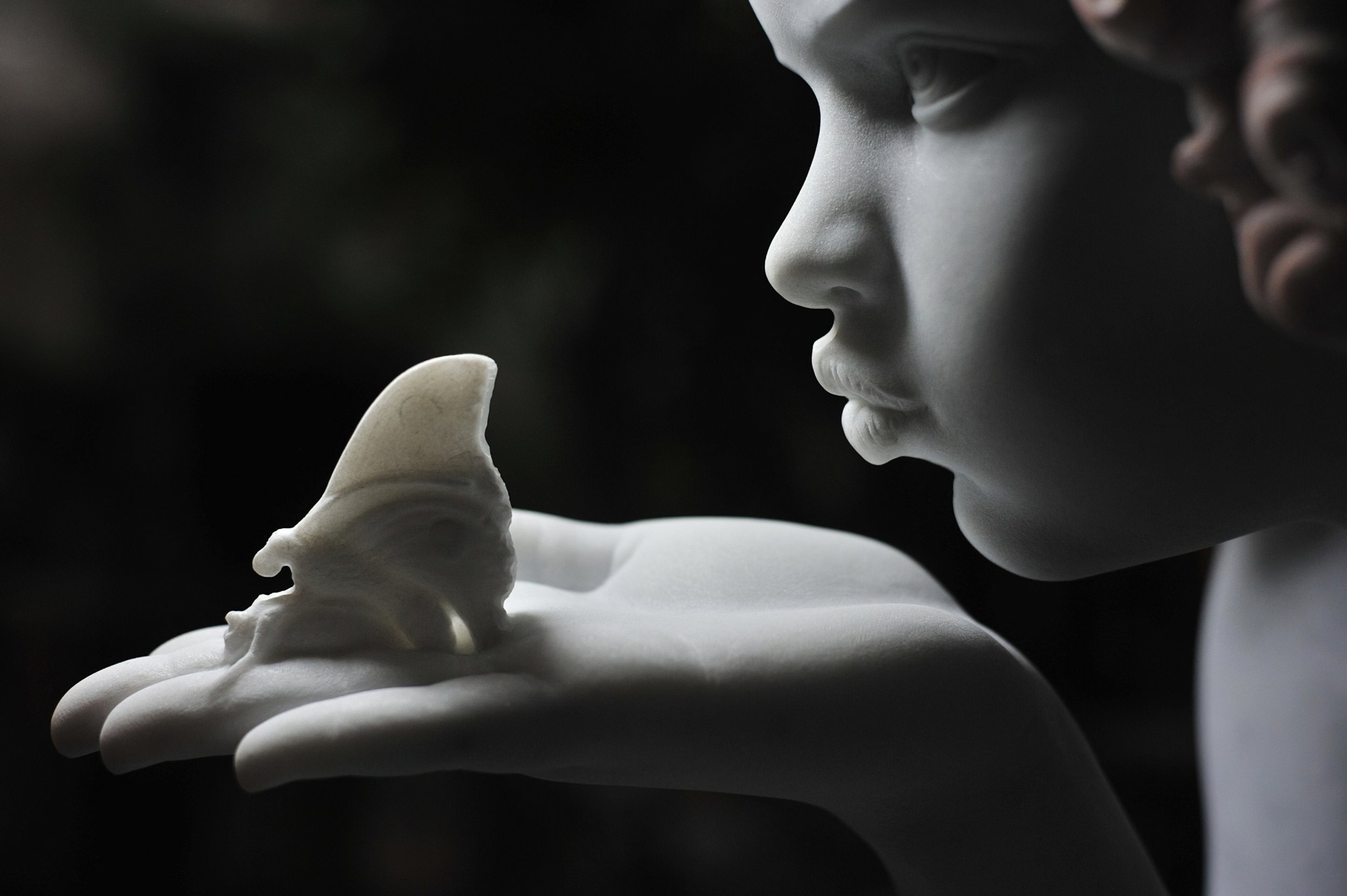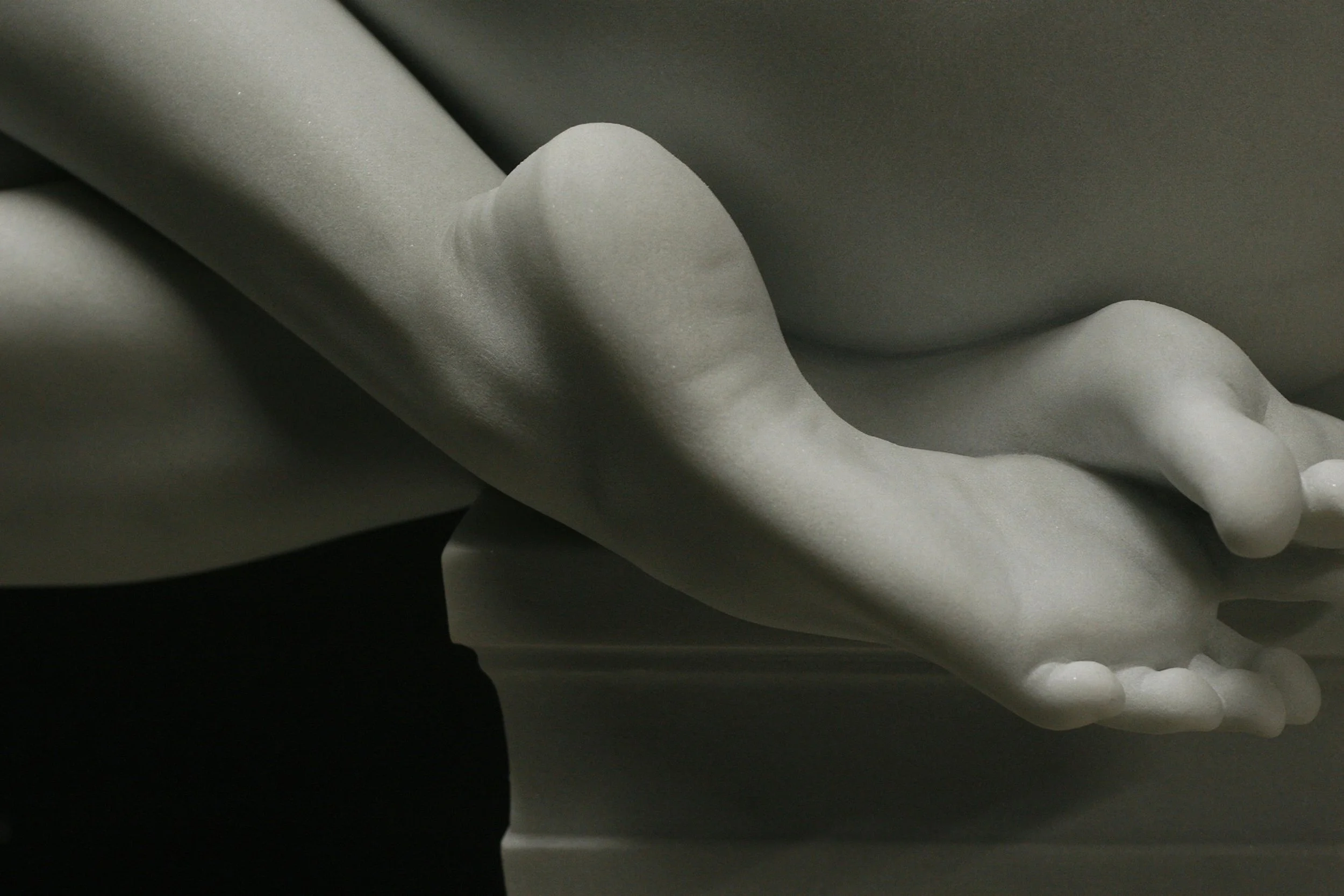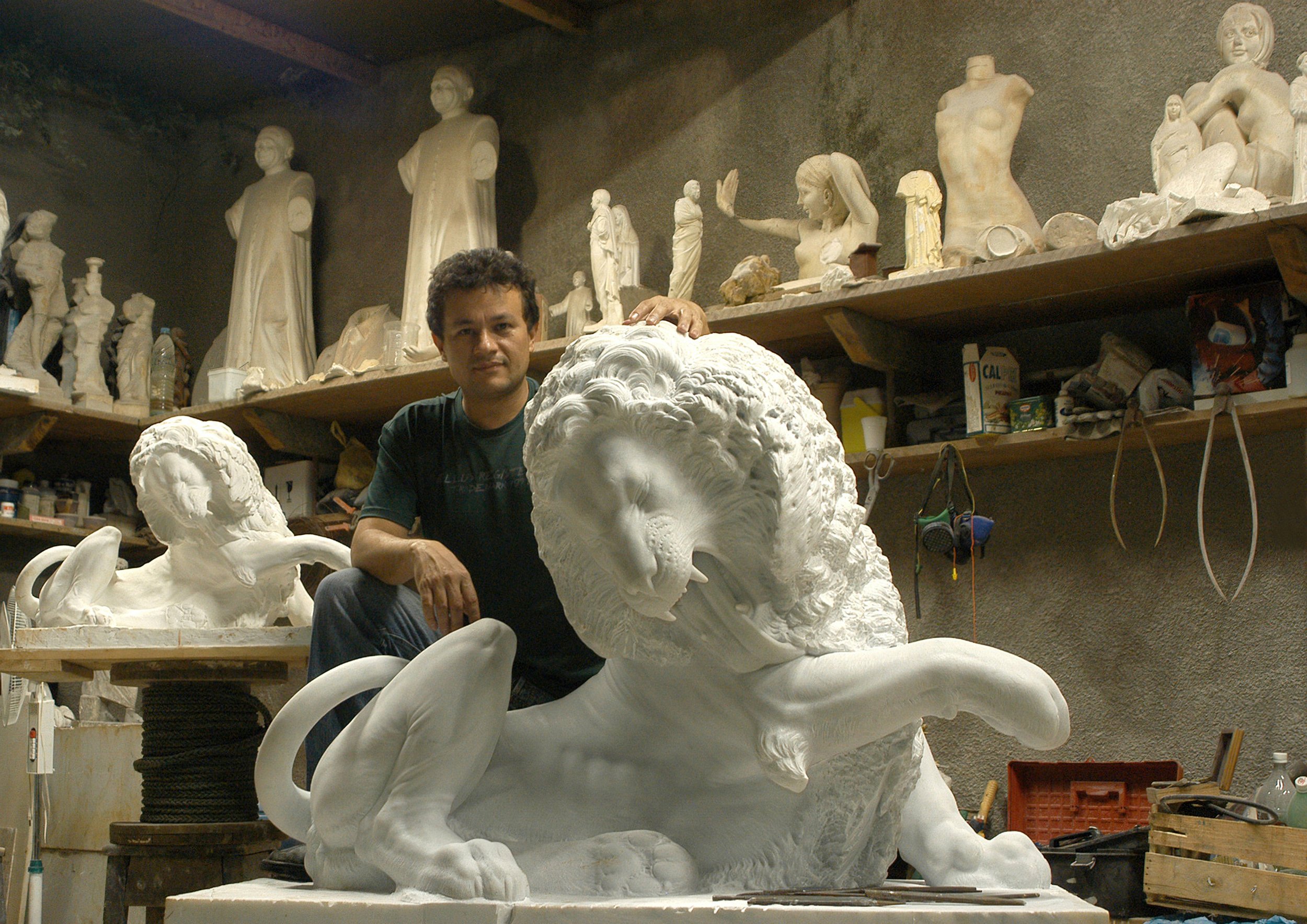The Sensuousness of Stone
The Sensuousness of Stone
A Brazilian sculptor breaks both pre and post-modern taboos to remain true to his inspiration and style.
Cícero D'Ávila is a Brazilian master sculptor who draws inspiration from his own personal artistic vision, rather than passing fads or trends imposed by media or the art market. He has been commissioned to create significant sculptures for portraits and monuments in various countries throughout the world, including the United States, China, and Europe. D'Ávila currently lives in São Paulo, where he maintains an atelier, and teaches courses in bronze modeling and marble sculpture.
Where did you learn your craft?
I've always wanted to be a sculptor since I can remember. To me this desire felt very natural, a necessity like any other. I'm from Brazil, and when I was young I had an important Portuguese teacher named Santos Lopes, who introduced me to modeling and bronze when I was still a teenager. Later I had the opportunity to live in Italy, where I learned marble techniques, among other skills.
It's funny but sometimes I notice artists don't like to mention their initial mentors, perhaps because they want to look more extraordinary, or for other personal reasons... but this artist was fundamental to my beginning, and I'm very proud of my connection with him.
What is it like working as a figurative sculptor in the world today?
It can be challenging, as today in general there seems to be a dictatorship set up in the contemporary art world—an integrated system among institutions, curators, critics, galleries, press and collectors that defines the rules of who can be in or outside of it. Behind the politics of this system there's often no real interest in the actual content or quality of an artwork; rather it simply suffices for the 'powers that be' to designate upon a work the label of 'art'.
It's very difficult for artists like myself to be invited to an important sculptural event, such as a biennial for example, without having to be engaged in significant relationships with the organizers who are part of this current system; it's like an exclusive type of club where only friends, and friends of friends are allowed to participate—if you go to museums or biennials nowadays, you'll understand what I mean.
Of course these types of politics inhibit and intimidate many sculptors who are seeking the freedom and space to follow their own path, particularly those who's work expresses a union of technique and creativity, and who above all are inspired to cultivate beauty and poetry in their art.
I'm part of this latter group—I carry out my work staying true to my ideals, and don't follow market dictates or make choices based on any kind of 'intellectual' or political impositions whatsoever. Over the course of my career I've found it's in fact quite possible to survive and get along in this way—my sculptures have been acquired by significant private collectors throughout the world, and this has financially helped me maintain a very high standard of quality in my work.
Where can aspiring artists find the necessary skills and support to follow this kind of path today?
For the most part, one cannot look to Western universities for the required skills and knowledge for real artistic improvement. In these places theoretical concepts about art have replaced actual technique and skill, and it's common for the faculty itself to try and deny traditional means of learning simply to justify their own lack of knowledge in this regard. It's like saying 'I don't know how to teach you, but that isn't really important, so let's just talk about concepts instead.'
I find it strange how in these very same schools, in order to become a good pianist one has to learn to read sheet music and master their instrument, dancers have to spend years studying movements, and architects are required to learn technical drawings and calculations, yet why is it that artists do not also have to learn how to draw, paint and sculpt? Instead we say anyone can be an artist today, because anything can be considered art. It simply depends upon connections—where you present your art, and who's supporting your career.
However in Chinese and Russian universities I've been able to witness, with a few exceptions, a great number of high-quality professionals concerned with teaching traditional processes in the plastic arts who are invested heavily in their teachers and students.
But here in the West we're almost always forced to resort to self-education, to search the internet for information, or to look for some remaining private schools in Italy, the United States, Brazil, and a few other countries where good techniques have survived alongside modern conceptual approaches.
It seems that not many sculptors work in marble anymore—why is this, and what's the process like working in this medium?
There are a number of factors that contribute to the lack of sculptors working in marble today—namely high costs, a scarcity of good marble, complicated logistics, and the demanding amount of time it takes to work with the material.
The traditional process always begins with a clay modeling of the work which is to be made. Then this is passed to plaster by means of molding, and the plaster model is then used to create points on a block of marble through a point machine. This process is very precise, but very slow.
My last sculpture, the Red Angel, was made this way. It's a very large work, and consumed me for approximately two years. Nowadays there's a technological process that can achieve the same result in much less time. It consists of scanning the model in plaster, or even modeling it with 3D software (such as ZBrush), and then milling the heaviest work on a robot. The same angel I made by hand would take about four months using this process.
Can you speak a little about the inspiration behind this work?
Red Angel was a challenge to work on, because it takes the traditional theme of an angel and adds a modern, contemporary touch. At first glance the work looks like a traditional sculpture, but if we go deep into its essence, we see that it is a very sensuous angel; so for me this work is really an attempt to break the taboo around the idea held by artists from antiquity that angels do not have sex.
There's always this element of sensuality present in my work. With the sculpture Redhead Caryatid again I wanted to play with the rigidity of a column (traditionally caryatid sculptures served as supporting pillars in architectural structures) by giving her a lot of lightness, very sensual curves, and an intense and inviting look. I chose to name both of these pieces 'redhead' because I find women with red hair to be very sensual.
Speaking of religious themes, you've also been commissioned to do pieces such as the Mother Theresa at the Church of Immaculate Conception in Washington, as well as large a Buddhist statue. What was it like working on these projects?
Creating the statue of Mother Theresa was a great experience, and very hard work, I must confess. In this project I was able to put to the test all my abilities as a sculptor. The sculpture was made at the Studio Cervietti in Pietrasanta (the largest and best marble sculpture studio in the world), and the studio itself turned it into marble. The result is really amazing.
The Buddhist statue was commissioned by a religious institution in São Paulo. It's 7 meters tall and made of wood coated in 18 karat gold. The creation process was conceived from a model made of plaster, and then I used the software program Zbrush to refine the modeling. After the piece was ready, it was sliced and milled into seven different blocks with a CNC robot I have in my studio, and then the pieces were coupled and finished by me.
This was the first monument I created using technology in the service of art. The result was magnificent and reduced the execution time by at least 4 times what it would have taken me traditionally. The entire process took about one year.
Are you working on any new marble projects at the moment?
Well, presently I'm finishing up several marble sculptures at the same time; I'll give special attention to one I call Eruption—it's a woman with very bold lines whose figure is supported by only three points... one might think that three points would create a very stable foundation for balance, but imagine a table that's missing one leg—it has three points, and is very unstable. In this sense I've created a sculpture that appears to defy the laws of gravity.
Despite this difficult position, the woman's figure appears free of any tension, almost as if she's being held by the gravity of the moon. When the viewer comes close to her, they're given the impression she could almost break, due to the fragility and compactness of the marble.
Where do you find your inspiration, and what do you hope to achieve through your work?
I draw inspiration from the experiences in my daily life, my way of viewing the world, and how I see myself as an individual within it. I try to materialize everything that sensitizes me into the form of sculpture.
I hope to continue reaching people throughout the world through my art. I've been told by many people that they're moved and experience a wide range of emotions through my works, and to me this is the greatest satisfaction an artist can have. It goes beyond conventions, market, rules or fashion.
Creating works of art that are an expression of my own vision and integrity has proven to be very successful for me, for today I am an accomplished sculptor. So I believe it's very important that we as artists work from the inside out, not from the outside in... in other words, that we be true to ourselves.
— View Cícero's latest work by following him on Instagram —





